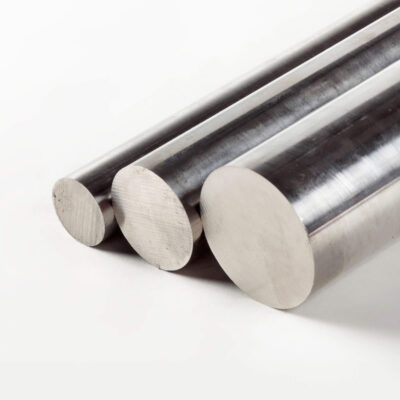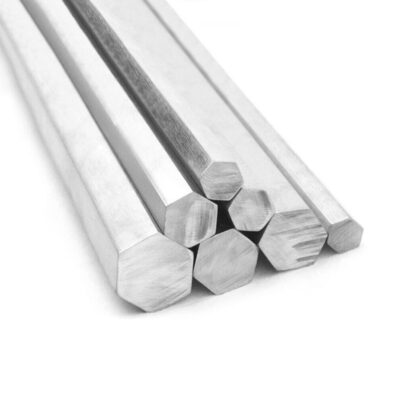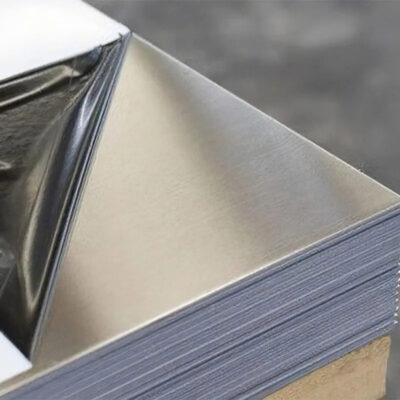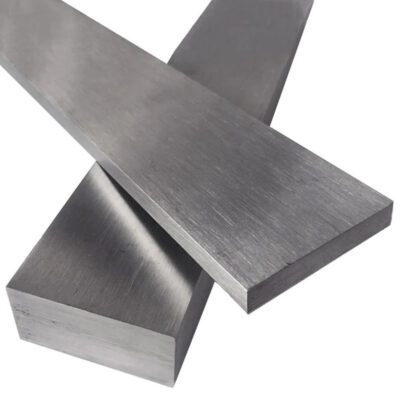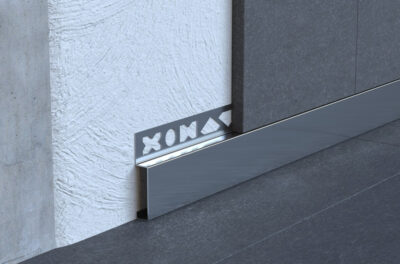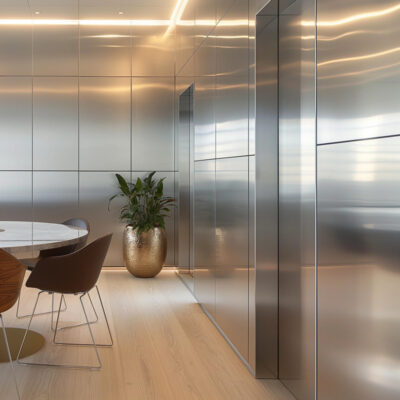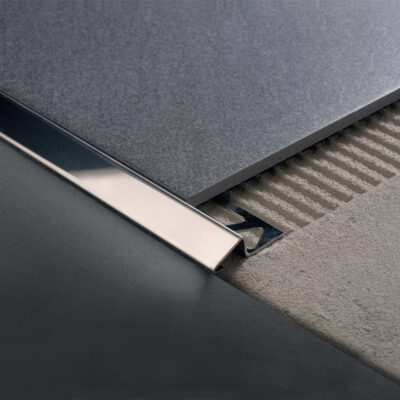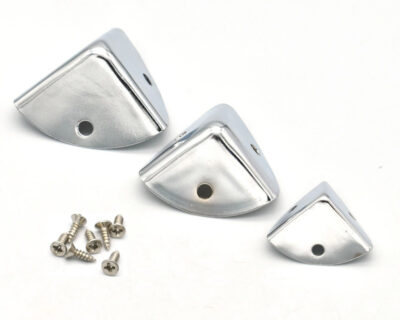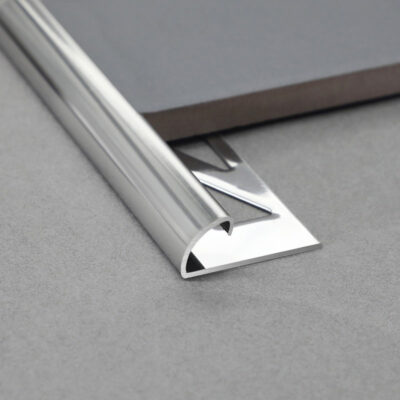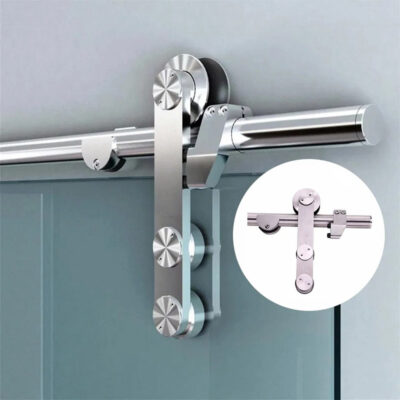The Fundamentals of Stainless Steel Grades
The first time I walked through a large metal service center, I was struck by the seemingly endless varieties of what appeared to be identical silver metal sheets, coils, and bars. The warehouse manager noticed my confusion and explained, “What you’re seeing isn’t just ‘stainless steel’ – it’s dozens of different alloys designed for specific environments and applications.” This conversation marked the beginning of my fascination with metallurgy, particularly the nuanced differences between similar-looking metals.
Stainless steel isn’t a single material but a family of iron-based alloys containing at least 10.5% chromium. This chromium creates a passive oxide layer that protects against corrosion – the defining characteristic that makes steel “stainless.” Within this broad category, austenitic stainless steels (300 series) represent the most widely used group, accounting for approximately 70% of stainless steel production worldwide.
The 304 and 316 grades belong to this austenitic family and share many similarities in appearance and base properties. Both were developed in the early 20th century as manufacturers sought corrosion-resistant materials for industrial applications. Type 304 (originally called 18-8 for its composition of 18% chromium and 8% nickel) emerged as the workhorse grade, while 316 was later developed for enhanced performance in more aggressive environments.
The austenitic crystal structure gives both grades excellent formability, weldability, and non-magnetic properties. At a glance, even experienced fabricators might struggle to distinguish between them visually. Yet their performance differences in certain environments can be dramatic – sometimes meaning the difference between a system that functions for decades and one that fails prematurely.
While reviewing E-Sang’s extensive product catalog, I noticed they offer both grades in various forms, acknowledging the importance of proper material selection based on specific application requirements rather than cost alone.
Chemical Composition: The Defining Difference
The chemistry of these two alloys reveals why they perform so differently despite their similar appearance. The distinction goes beyond simple marketing or arbitrary standardization.
| Element | 304 Stainless Steel | 316 Stainless Steel | Effect on Properties |
|---|---|---|---|
| Chromium | 18-20% | 16-18% | Forms passive oxide layer for corrosion resistance |
| Nickel | 8-10.5% | 10-14% | Stabilizes austenite structure, enhances formability |
| Molybdenum | 0% | 2-3% | Improves pitting/crevice corrosion resistance |
| Carbon | ≤0.08% | ≤0.08% | Strengthens steel but can form chromium carbides |
| Manganese | ≤2% | ≤2% | Improves hot ductility |
| Silicon | ≤1% | ≤1% | Improves oxidation resistance |
The most significant difference is the addition of molybdenum in 316 stainless steel. During a materials science seminar I attended last year, Dr. Elena Rodriguez, a metallurgist with 25 years of experience in corrosion studies, explained: “Molybdenum is the game-changer here. It enhances the stability of the passive film, particularly in environments containing chlorides. This makes 316 substantially more resistant to pitting corrosion in marine or chemical processing environments.”
Interestingly, 316 typically contains slightly less chromium than 304, which might seem counterintuitive since chromium is the primary element responsible for stainless character. However, the molybdenum more than compensates for this reduction. Additionally, 316 generally contains higher nickel content, further stabilizing the austenitic structure and enhancing its performance in chloride environments.
The chemical composition translates directly into a value called the Pitting Resistance Equivalent Number (PREN), calculated as:
PREN = %Cr + 3.3(%Mo) + 16(%N)
This formula illustrates why 316 stainless steel, with its molybdenum content, achieves a higher PREN value (typically 24-26) than 304 (typically 18-20), indicating superior resistance to localized corrosion.
Corrosion Resistance: Where Real Performance Differences Emerge
A few years back, I was consulting on a project for a coastal processing facility in Florida. They had installed a 304 stainless steel piping system, assuming that “stainless” meant it would resist the salt-laden air. Eighteen months later, they were replacing large sections of the system due to severe pitting corrosion. This expensive lesson underscores the critical importance of understanding corrosion resistance differences between these grades.
The corrosion resistance of stainless steel derives from its ability to form a self-healing chromium oxide passive layer on the surface. However, this protective mechanism can be compromised in different ways, depending on the environment.
Chloride Resistance
The most dramatic performance difference between 304 and 316 stainless steel appears in chloride-containing environments. Chlorides (found in seawater, de-icing salts, and many chemical processes) can penetrate the passive layer, particularly at higher temperatures or lower pH levels.
During accelerated corrosion testing with 3.5% NaCl solution (simulating seawater), 304 stainless typically shows pitting initiation within 100-200 hours, while 316 often remains unblemished for 500+ hours under identical conditions. This dramatic difference explains why 316 is often called “marine grade” stainless steel.
Pitting and Crevice Corrosion
Pitting corrosion—localized attacks that create small holes in the material—is particularly insidious because it’s difficult to detect until failure occurs. The molybdenum in 316 stainless steel significantly enhances resistance to this form of attack.
Similarly, crevice corrosion occurs in tight spaces where oxygen is depleted, allowing the protective passive layer to break down. In standardized ASTM G48 testing (ferric chloride pitting test), 316 typically shows a critical pitting temperature 15-20°C higher than 304, representing a substantial performance advantage.
Stress Corrosion Cracking
Both grades can be susceptible to stress corrosion cracking (SCC) under specific conditions involving tensile stress, susceptible material, and corrosive environment. However, 316 generally demonstrates better resistance to this failure mechanism, particularly in moderate chloride environments.
When I visited a chemical processing plant in Texas last year, the maintenance engineer showed me their material selection protocol. “We learned the hard way,” he said, pointing to a wall chart mapping environment conditions to appropriate materials. “In areas with process temperatures above 60°C where chlorides might be present, we never use 304 anymore. The small premium for 316 is nothing compared to the cost of downtime and replacement.”
Mechanical Properties: Similarities and Subtle Differences
When comparing mechanical properties, 304 and 316 stainless steels show more similarities than differences, but some subtle variations can influence material selection for specific applications.
| Property | 304 Stainless Steel | 316 Stainless Steel | Notes |
|---|---|---|---|
| Tensile Strength | 515-620 MPa | 485-620 MPa | Generally comparable |
| Yield Strength | ≥205 MPa | ≥170 MPa | 304 slightly higher |
| Elongation | ≥40% | ≥40% | Excellent ductility in both |
| Hardness (Brinell) | ≤201 | ≤217 | Similar hardness range |
| Modulus of Elasticity | 193 GPa | 193 GPa | Identical stiffness |
| Maximum Service Temp. | 870°C | 870°C | Similar high-temp capability |
| Low Temp. Performance | Excellent | Excellent | Both retain toughness at cryogenic temps |
These similarities aren’t surprising given both grades share the same basic austenitic crystal structure. During a visit to a fabrication shop in Chicago, I watched as technicians formed complex parts from both materials. “From a forming and welding standpoint, they work almost identically,” the shop supervisor told me. “If anything, we sometimes find 316 slightly easier to work with in complex formations, but the difference is minor.”
The high nickel content in both grades ensures excellent ductility and toughness, even at extremely low temperatures. This makes them suitable for cryogenic applications where many other metals would become brittle.
Both grades work-harden significantly during cold forming, which can be either advantageous or problematic depending on the application. This property increases strength but can make subsequent forming operations more difficult. After significant cold working, both may develop some magnetic response despite being classified as non-magnetic materials in their annealed state.
In high-temperature applications, both materials maintain good strength and oxidation resistance up to approximately 870°C. However, in the 425-860°C range, both grades can experience carbide precipitation at grain boundaries (known as sensitization), potentially making them susceptible to intergranular corrosion. For applications in this temperature range, low-carbon versions (304L/316L) or stabilized grades (321/347) are often preferred.
Cost Considerations: Is the Premium for 316 Justified?
The cost differential between these two grades represents one of the most significant factors in selection decisions. Throughout my career consulting on material selection, I’ve encountered numerous situations where budget constraints pushed projects toward 304 stainless steel, sometimes appropriately and sometimes at the expense of long-term reliability.
Typically, 316 stainless steel commands a 25-40% price premium over 304, though this gap fluctuates based on market conditions and nickel/molybdenum prices. The gap widened considerably during 2021-2022 when supply chain disruptions and raw material shortages affected global markets.
During a recent procurement planning session with a manufacturing client, we developed this comparison framework:
Cost Factors Beyond Base Material Price:
Maintenance and replacement costs – In corrosive environments, 304 may require more frequent replacement, nullifying initial savings
Downtime costs – Production interruptions due to material failure often dwarf the material cost differential
Safety and liability – Critical applications where failure could cause injury or environmental damage justify premium materials
Carrying costs for spares – Systems using 304 in borderline applications often require more extensive spare parts inventories
One interesting case study involved a food processing plant that initially saved approximately $45,000 by selecting 304 stainless steel for a processing line. Within three years, they had spent over $210,000 in repairs, replacement, and associated downtime due to premature corrosion in areas exposed to cleaning chemicals. The maintenance director later admitted, “We were penny-wise and pound-foolish. The decision was made purely on initial cost without considering the operating environment.”
Availability can also impact cost calculations. Type 304 is more widely available in diverse forms and from more suppliers, potentially offering procurement advantages in terms of lead time and negotiating leverage. During supply chain disruptions, this wider availability can become particularly valuable.
Applications: Where Each Grade Shines
The application environment should ultimately drive the selection between these two grades. Based on their properties, certain industries and applications naturally favor one grade over the other.
Marine Environments
For applications with exposure to seawater or salt spray, 316 stainless steel is almost always the preferred choice. This includes:
- Boat fittings, rigging, and hardware
- Offshore oil and gas equipment
- Coastal architectural applications
- Desalination plants
- Marine scientific instruments
During a marina renovation project I consulted on in San Diego, we conducted a survey of existing hardware installed 15 years prior. The difference was striking: 304 components showed significant pitting and staining, while 316 components remained in serviceable condition with minimal cosmetic changes.
Food and Beverage Processing
Both grades are commonly used in food processing, with selection typically depending on specific conditions:
304 stainless steel is suitable for:
- Basic food preparation surfaces
- Dry processing environments
- Brewing equipment (primarily fermentation and storage)
- Milk transportation and storage
316 stainless steel is preferred for:
- Processing equipment for acidic foods
- Equipment exposed to cleaning chemicals containing chlorides
- Salt-heavy food processing (cheese, pickles, etc.)
- Equipment requiring frequent sanitizing with aggressive chemicals
Chemical Processing
The chemical processing industry typically has detailed material selection protocols based on specific media, concentrations, and temperatures. Generally:
304 stainless steel serves well in:
- Mild organic and inorganic chemicals
- Nitric acid environments (where it often outperforms 316)
- Basic chemical storage and transfer of non-chloride solutions
316 stainless steel excels with:
- Sulfuric acid (moderate concentrations)
- Phosphoric acid
- Process streams containing chlorides
- Higher temperature chemical processes
Architectural Applications
Architectural applications often prioritize appearance and maintenance requirements:
304 stainless steel is commonly used for:
- Interior architectural features
- Urban environments away from coastal areas
- Decorative elements not subjected to harsh cleaning
- Lower-cost railings and trim in protected areas
316 stainless steel is selected for:
- Coastal building exteriors
- Swimming pool surrounds (exposed to chlorine)
- Urban environments with high pollution levels
- High-profile projects where staining would be problematic
Medical and Pharmaceutical
In the medical field, material selection is driven by strict regulatory requirements:
304 stainless steel appears in:
- Basic laboratory equipment
- Non-implant medical devices
- General hospital furnishings
- Pharmaceutical processing for non-corrosive products
316 stainless steel (and often its low-carbon variant 316L) is mandated for:
- Surgical instruments
- Implantable devices
- Equipment for saline and bodily fluid exposure
- Pharmaceutical equipment for corrosive or high-purity processes
Making the Right Selection: A Decision Framework
After years of consulting on material selection, I’ve developed a structured approach to choosing between these two grades. This framework helps eliminate both overdesign (spending unnecessarily on 316) and underdesign (risking failure by selecting 304 for inappropriate environments).
Environmental Assessment Questions:
- Will the material be exposed to chlorides (salt water, de-icing salt, etc.)?
- Consistent exposure: Select 316
- Occasional/minimal exposure: 304 may suffice with proper maintenance
- What temperature range will the material experience?
- Higher temperatures accelerate corrosion and may dictate 316
- Combined high temperature (>60°C) and chlorides strongly indicates 316
- Will the component be regularly cleaned with chemical solutions?
- Chlorine-based sanitizers or bleach solutions favor 316
- Mild detergents without chlorides may permit 304
- Is the application in a marine or coastal environment?
- Within 5-10 miles of saltwater: Consider 316
- Interior applications in coastal areas: Evaluate based on air handling and exposure
- What is the expected service life?
- Long-service applications (>10 years) in borderline environments may justify 316
- Temporary or regularly replaced components may allow 304
- What are the consequences of failure?
- Critical applications where failure causes safety hazards or significant downtime warrant 316
- Non-critical applications with easy access for inspection/replacement may accept 304
During a project for a pharmaceutical manufacturer, we used this framework to identify areas where 304 was sufficient (interior surfaces of HVAC ducting) versus areas requiring 316 (process equipment exposed to cleaning chemicals). This targeted approach saved approximately 22% on material costs while ensuring appropriate corrosion resistance where needed.
A common mistake I’ve observed is selecting material based solely on industry norms rather than specific operating conditions. For example, not all food processing equipment requires 316 stainless steel, despite its common use in the industry. Conversely, some architectural applications in severely corrosive environments may require even more corrosion-resistant alloys than standard 316.
Future Trends and Innovations in Stainless Steel
The landscape of stainless steel continues to evolve, with new developments potentially changing the traditional 304 versus 316 decision process.
Lean Duplex Stainless Steels
Duplex stainless steels like 2205 (UNS S32205) and lean duplex grades like 2304 (UNS S32304) offer corrosion resistance comparable to or exceeding 316 with higher strength and potentially lower cost due to reduced nickel content. These grades feature a mixed austenitic-ferritic microstructure.
Dr. Rafael Sanchez, a materials scientist I interviewed at a recent metal industry conference, explained: “We’re seeing increased adoption of lean duplex grades that provide better corrosion resistance than 316 at a competitive price point. The higher strength also allows downgauging in many applications, further reducing material costs.”
Nitrogen-Enhanced Grades
Nitrogen additions to austenitic stainless steels enhance both strength and corrosion resistance. Grades like 304N, 316N, and the high-nitrogen variants are gaining popularity in specialized applications.
“Nitrogen is an austenite stabilizer that substitutes for some of the nickel content,” explains metallurgist Tina Wong. “It significantly increases the PREN value and improves mechanical properties. As nickel prices fluctuate, these grades offer more stable pricing and excellent performance.”
Sustainability Considerations
Environmental factors are increasingly influencing material selection. While stainless steel generally offers excellent sustainability through its longevity and 100% recyclability, differences exist between grades.
A life-cycle assessment comparing 304 and 316 typically shows higher initial environmental impact for 316 production due to molybdenum mining and processing. However, in applications where 316 significantly outlasts 304, the life-cycle impact may favor the more corrosion-resistant grade.
The recycling industry has also improved its ability to separate and recover alloying elements from stainless steel scrap, making the recycling process more efficient for both grades.
Emerging Applications
Emerging technologies like hydrogen production, carbon capture, and advanced energy systems create new demands for corrosion-resistant materials. These applications often involve complex environments that push the limits of conventional stainless steels.
“We’re seeing increased interest in both 304 and 316 for green hydrogen equipment,” notes energy materials consultant James Chen. “The selection depends highly on specific parameters like temperature, pressure, and potential contaminants in the system. In some cases, we’re finding that even 316 isn’t sufficient for all components, leading to consideration of higher-alloyed materials.”
The Bottom Line: Fitness for Purpose
The choice between 304 and 316 stainless steel ultimately comes down to fitness for purpose – selecting a material that will perform adequately for the intended application and service life at an acceptable cost.
For many applications, 304 stainless steel provides excellent service. Its widespread availability, lower cost, and good corrosion resistance in non-aggressive environments make it the default choice for many products. However, in environments containing chlorides, at elevated temperatures, or where maintenance is difficult, 316 stainless steel often proves to be the more economical choice over the full life cycle.
As one senior engineer at a major chemical company told me, “We don’t necessarily choose the cheapest material, but rather the least expensive solution.” This wisdom captures the essence of proper material selection – looking beyond initial procurement costs to consider the total cost of ownership including maintenance, reliability, and replacement.
The 304 versus 316 decision represents a classic engineering tradeoff between initial cost and long-term performance. By understanding the fundamental differences between these grades and carefully assessing the application environment, engineers and purchasers can make informed decisions that balance these competing factors appropriately.
Frequently Asked Questions About 304 vs 316 Stainless Steel
Q: What is the main difference between 304 and 316 stainless steel?
A: The primary distinction between 304 and 316 stainless steel lies in their composition and corrosion resistance. 304 stainless steel contains 18% chromium and 8% nickel, offering good corrosion resistance for general applications. In contrast, 316 stainless steel includes 16% chromium, 10% nickel, and 2% molybdenum, enhancing its resistance to chlorides and harsh chemicals, making it ideal for marine and chemical environments.
Q: Which is more expensive, 304 or 316 stainless steel?
A: 316 stainless steel is generally more expensive than 304 due to its higher nickel content and the addition of molybdenum. This increased cost reflects its superior corrosion resistance and durability, which can lead to long-term savings in demanding environments.
Q: What are the primary uses of 304 stainless steel?
A: 304 stainless steel is widely used in:
- Water piping
- Storage tanks
- Indoor electrical enclosures
- Kitchen equipment and appliances
- Decorative trim
- Automotive trim
It is preferred for its cost-effectiveness and suitability for general industrial and household applications.
Q: When should I use 316 stainless steel instead of 304?
A: Use 316 stainless steel when your application requires enhanced corrosion resistance, such as in:
- Marine environments
- Chemical processing
- Medical equipment
- Coastal installations
- High-salt areas
The superior chemical resistance of 316 ensures durability and longevity in harsh conditions.
Q: Does the choice between 304 and 316 stainless steel affect mechanical properties?
A: Yes, 316 stainless steel generally exhibits higher tensile strength and hardness compared to 304. 316 is stronger and more durable, making it suitable for applications needing enhanced mechanical properties. However, 304 stainless steel offers better flexibility due to its lower modulus of elasticity.

